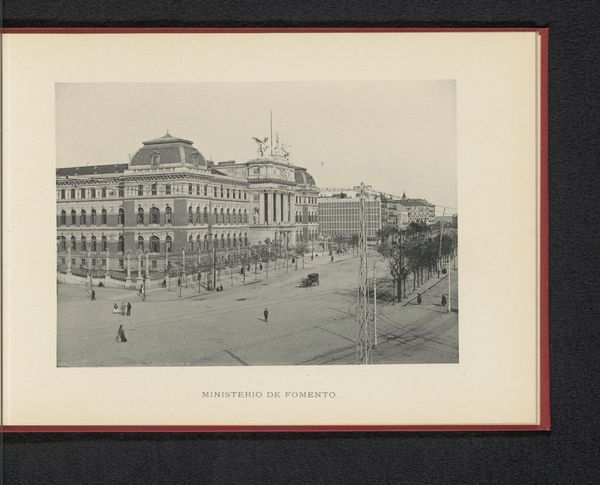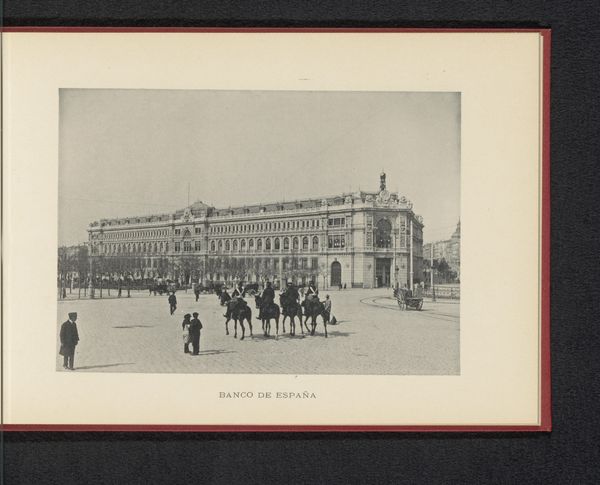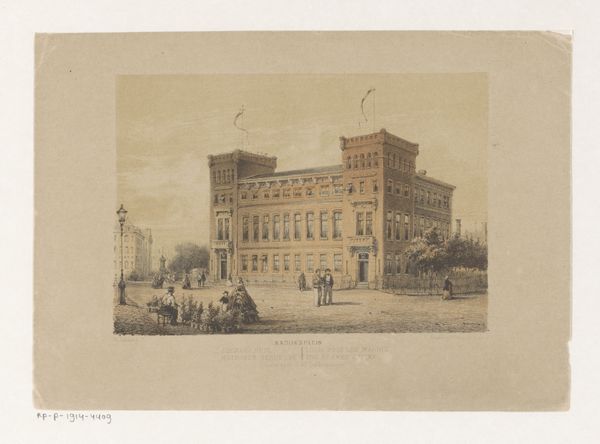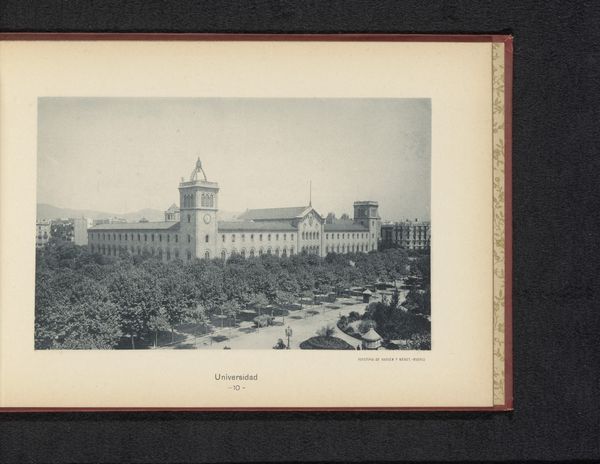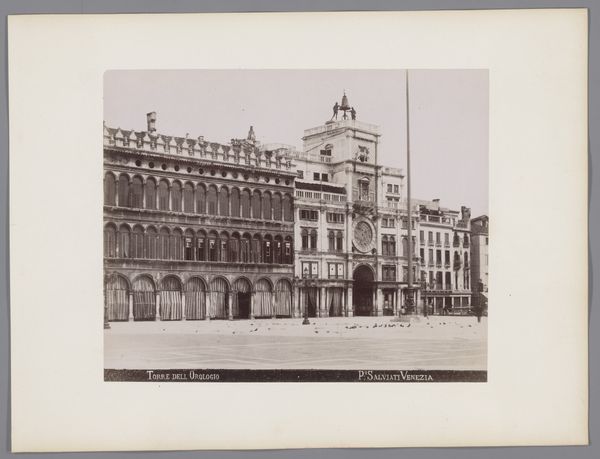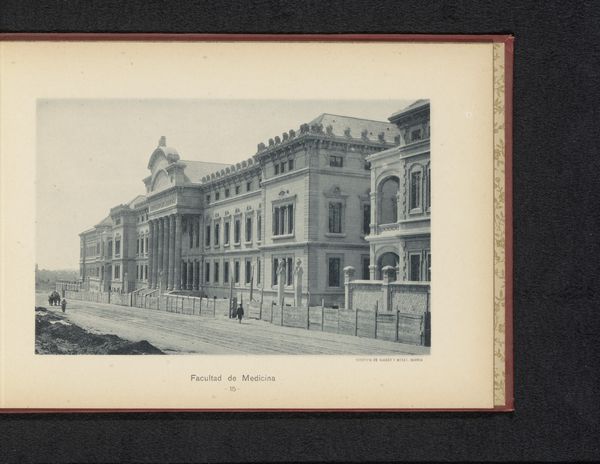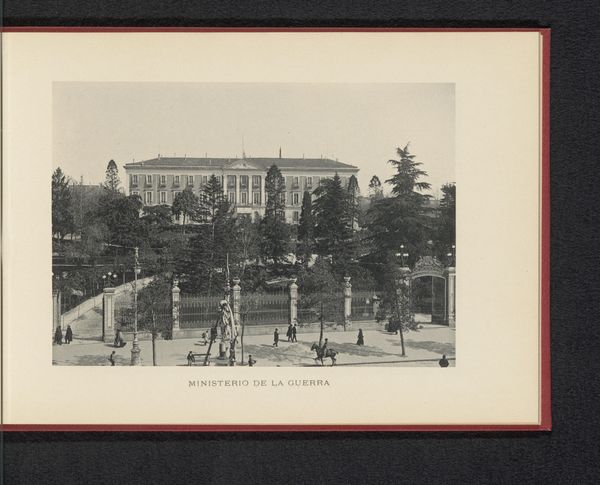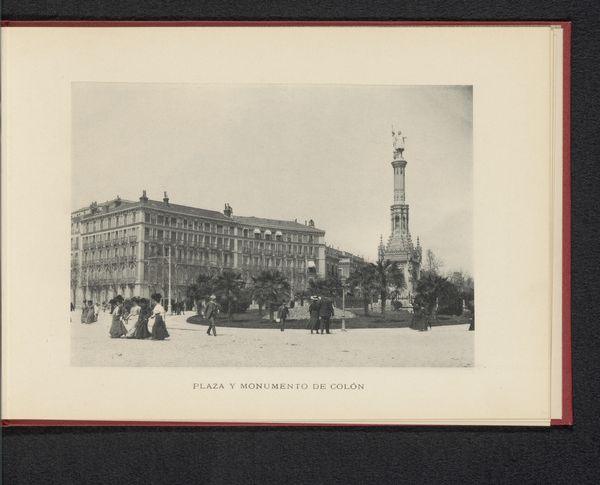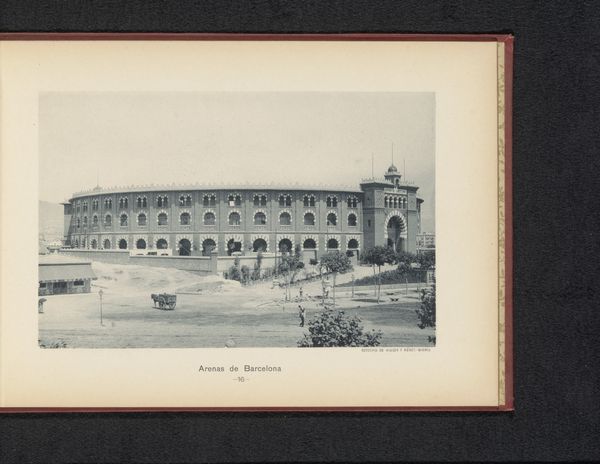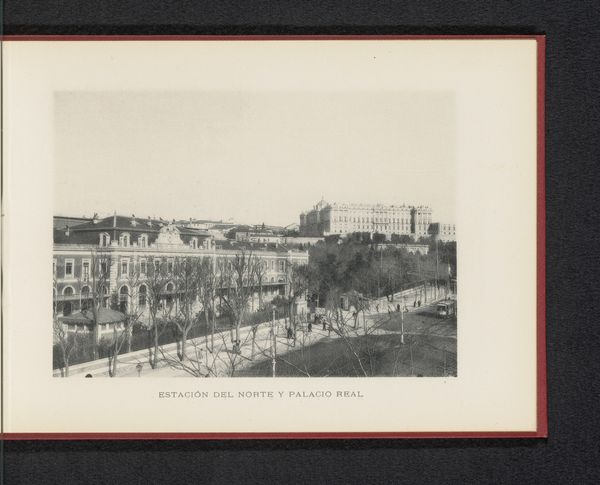
Gezicht op de ingang van de Plaza de toros de la Fuente del Berro, Madrid c. 1888 - 1898
0:00
0:00
photography
#
pictorialism
#
photography
#
cityscape
#
realism
Dimensions: height 115 mm, width 163 mm
Copyright: Rijks Museum: Open Domain
Curator: Welcome. Before us, we have a photographic print from around 1888-1898 attributed to Hauser y Menet. It’s entitled “Gezicht op de ingang van de Plaza de toros de la Fuente del Berro, Madrid,” which translates to “View of the Entrance of the Plaza de Toros de la Fuente del Berro, Madrid." Editor: The first thing that strikes me is how ordinary it looks. We see the bullring framed by the everyday street scene: horse-drawn carriages, pedestrians, even a tram. It lacks any romanticism one might expect given the subject matter. Curator: Absolutely. This photograph documents not only a structure but a socio-cultural ritual deeply embedded in Spanish identity. Hauser y Menet’s image offers insights into the evolution of public spectacles and urban development in Madrid during this period. The inclusion of modern transportation like the tram signifies changing social landscapes. Editor: I agree, but it also shows who had access. Look at those carriages versus the packed tram and those on foot; class is clearly displayed. Then there’s the bullfight itself – what does it signify? Dominance over nature? Performances of masculinity rooted in violence? Curator: Those are significant points to consider. The architecture of the bullring itself—its grandeur—suggests power structures, further legitimizing a controversial spectacle. How were these spaces represented, and who benefitted from the narratives they projected? That is central. Editor: It makes me think about contemporary ethical debates, doesn't it? We need to see art not just as aesthetics but as visual documentation of social practices, which can reinforce harmful ideologies. That is an angle which allows us to create conversation, engagement. Curator: I completely agree. We see similar complexities echoed in modern architecture today, how city infrastructure can exclude certain groups while inviting others, as if making an argument through civic design. Editor: Exactly, this image provokes examination beyond its mere surface, making visible cultural histories often forgotten when simply looking at bullfighting's historical iconography. Curator: Understanding that wider context will certainly provide more nuanced viewing experiences overall. Editor: And more necessary critiques, always necessary critiques.
Comments
No comments
Be the first to comment and join the conversation on the ultimate creative platform.
